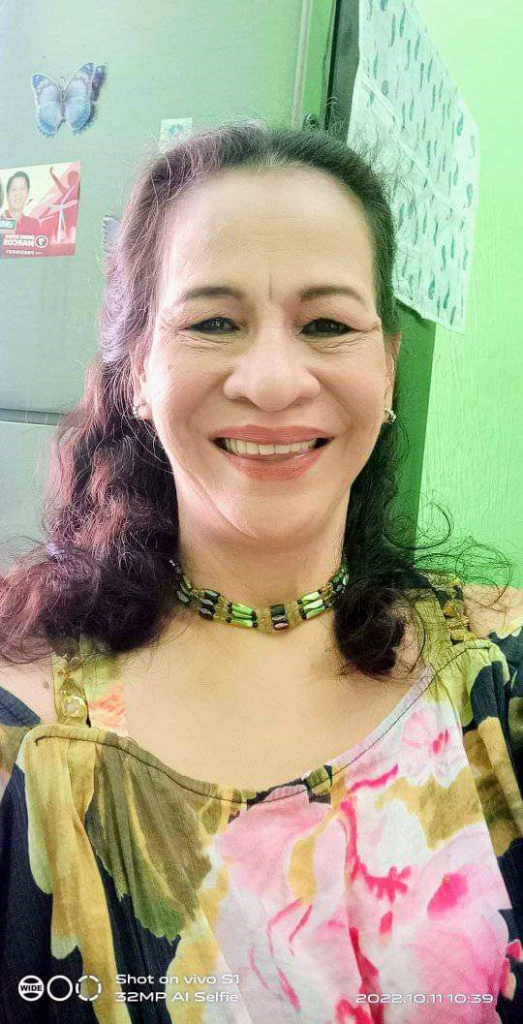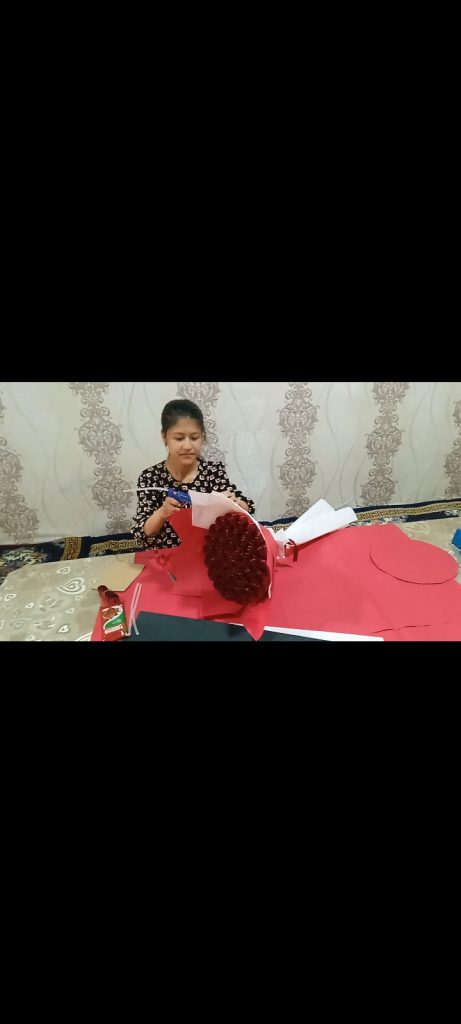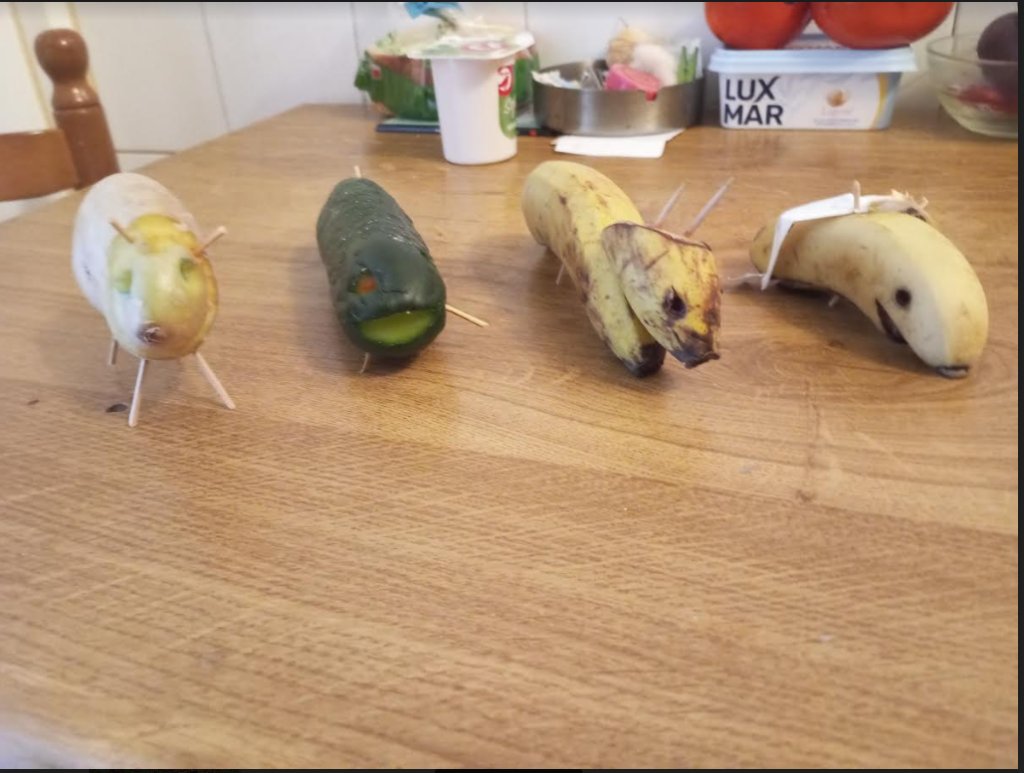Image of a light skinned young woman with a knit sweater and short blonde hair up in a bun holding a copy of Marjane Satrapi’s Persepolis, which has black and white cartoon images of a family up against a black background and green and white text.
Critically examine Marjane Satrapi’s “Persepolis” as a graphic novel. Or
Discuss the significance of the veil in Marjane Satrapi’s Persepolis. Or
How are the Islamic fundamentalists represented in the book Persepolis? What suggestions does Satrapi make about the relationship between faith and fanaticism?
Marjane Satrapi’s “Persepolis” is the woven into the new found literary form positing the new found respectability of book length graphic novels—-accessible, vernacular and with mass popular appeal—-historicized memorabilia corresponding to mass murder, massacre, genocide, holocaust, brutality, harassment, execution and bombing amidst Iran-Iraq war. Fragmented, disembodied, and divided between frames suggestive of psychological trauma as connoted in the epiphany of “The Veil”. A visual chronicle of childhood rooted and articulated through momentous, and traumatic and historic events about the verbal and visual practice of never forgetting.
An unsmiling veiled girl sitting with her arms crossed in the center of the frame. She situates the exposition to the reader “This is me when I was 10 years old […] This was in 1980.” A hand, a bent elbow, and chest length veil separates herself from the class photography as spacings within pictorial frame purports disruption of her own characterological presence. An icon of single eye, directly engaging the reader, dangling over the book’s very first gutter, reminding readers at the outset that we are aligned with Satrapi’s penetrating vision and enabling retracing of that vision: “I give myself this duty of witnessing.” A crowd of masses throwing their fists in the air in front of a stark black background represents Islamic Revolution and then the veiling mandate of 1980.
Persepolis narrates the trials and tribulations of precocious Marji and her upperclass leftist parents exasperation with the Iranian political regime; and Marji’s pricked consciousness ; holocausts, homicides and suicides of friend circle and family relations; havoc wreaked by Iraq-Iran geopolitical crises and Marji;s fierce and dangerous outspokenness eventually inspires her parents to deport her abroad at a safer sheltered asylum away from the trepidation and perturbance; her mother becomes comatose state of being as Marji departs Iran.
Satrapi’s text is framed diegetically and externally to the introductory injunctions of “never forgetting” as Uncle Anoosh, the naxalite prisoner advises her niece during executionary wish-fulfillment: “Our family memory must not be lost. Even if it isn’t easy for you, even if you don’t understand it at all.” Satrapi’s multiple autobiographical voices illustrative of the vignettes of selves——-Satrapi’s older and recollective voice registering of overarching narrative text while the younger and directly experiencing voice registering of dialogue and throughout pictorial space——the visual voice.
States of being of memory and matter of factness reinforce Satrapi’s renegotiations between versions of herself showing us the visual and discursive process of never forgetting. Satrapi unfolds the procedure of memory through spatializing form of comics, which visualizes and enmeshes overlapping of selves and their locations. Persepolis’s presentation of pictorial space is discursive. Satrapi displays the political horror of producing and marking ordinary childhood by offering what seems to the reader to be the visual disjuncture in her child’s eye rendition of trauma.
This expressionism weaves the process of memory into the book’s technique of visualization. Satrapi’s stark style is monochromatic—–there is no evident shading technique; she offers black and white. However the visual emptiness of simple, ungraded blackness in frames showcase the depthness of the condition of remembrance as pointed out by Kate Flint’s words: “maybe elicited by the deliberate empty spaces, inviting the projection of that which can be seen only in the mind’s eye to an inviting vacancy.”
Persian miniatures, murals and friezes of public skirmishes appear as stylized and symmetrical bodies, surfeiting mere mimetic representations interlaced with the Persianness of historical avant-garde. “I was born in a country in a certain time, and I was witness to many things. I was a witness to a revolution. I was a witness to war. I was a witness to a huge emigration”——collective ethos of harrowing sense of death casts her imaginative selfhood to a culture pervaded by violence and retribution. Penultimate panel of “The Letter” suggests the Iranian landscapes and the grimly grotesque configuration of horizontally stretched out and abstractly stacked corpses/ mass dead bodies. “We had demons demonstrated on that very day we shouldn’t have: on Black Friday. That day there was so many killed in one neighbourhoods that a rumour spread that Israeli soldiers were responsible for the slaughter.”
“The Cigarette” in “The Persepolis” demonstrates three-tiers of imbrications of the historical routine [execution] and the personal routine [sneaking cigar] depicting blindfolded prisoners about to be executed against a wall, directly above and below frames in which we view Marji in that prosaic, timeless rite of initiation: smoking her first cigar. This retrospective mode of narratorial address to the audience from within the pictorial space of the frame and the body politic of tender hearted Marjai is unusual in the text; blurring of voices and register here works with the blurrings of the historical and the everyday registers that is also part of the narrative suggestion of the page.
Ethical, verbal and visual practice of not forgetting is not merely about exposing and challenging the virulent machinations of historicization but is more specifically about examining and bearing witness to the intertwining of the everyday and the historical. Its polemical resonance lies in the fact that visually virtuosic is required to represent the political trauma that plagues Marji’s childhood. Persepolis is thus the reimagination and reconstruction that retraces the literal growing child body in space, reinscribing that body to generate a framework in which versions of selfsome stripped of agency, in which some are possessed by it——-in productive conversation. Persepolis’ feminist graphic narrative harnesses visibility politics magnified by the lenses of visual ethics aesthetics showcasing the censured and censored through representation and resymbolization.
McCloud pointed out that segmented pictorial illustrations in the form of comic book or graphic novel transforms the temporal relationships into the spatial matrix. Pictorial framing can be related to ideological framing——-the filtering of information, of news, of times, of identities, of nationalities and gender——through templates and through structures of feelings that produce predetermined judgements of values narrativized translations of experience. “We the kids in America” become the epitome of the youth generation’s voice as an ideological frame narrative symbolic of Western cultural imperialism intruding as a lurking anthem in the Marjane Satrapi frame-within-frame fantasy of Western counter cultural identity in the image of Kim Wilde.
Satrapi’s bricolage and appropriation, borrowing, mixture of heterogeneous culture resonates both state societal interpellation as pedagogical and civil societal interpellation as performativity that both function as frames and mirrors of self. Both constructs of fictions of the self. Marjane Satrapi’s grandmother advices the granddaughter: “But there is nothing worse than bitterness and vengeance […] Always keep your dignity and be true to yourself”, while the latter embracing folding cuddling of the former. “I smelled my grandmother’s bosom. It smelled good. I cannot forget that smell” resonates Proustian motif with the advice bestowed upon by the family matriarch about the jerks she is destined to meet throughout her life.
Lacanian terms of prelinguistic and extralinguistic formation of subjectivity—-the contrast in Persepolis is not only between a prelinguistic visual reflection of the self and an adult linguistic reflection, but the non visual bodily and sensory reflection of the self in the matriarch other and the visual and the exilic reflection of the self outside home and nation. The mirrored frames of the panels function in Persepolis as subjective fragmentation, unstability and uncertainty. Satrapi’s exodus life is as diasporic selfhood re establishes the cultural icon of hijab as the symbolic icon of familiarity of national and familial belonging casting off claustrophobic marginalization: “so much for my individual and social liberties […] I need so badly to go home.”
Marjane Satrapi’s contrasting frame of panels demarcating bachelorette virginity and consummated maidenhood by her reflections of brightly smiling long hair, makeup and short wear with trimmed laces, and sitting in front of a window overlooking a garden of birds; and Marjane’s reflection of a girl smoking cigar, wearing black pants and shirts, sitting in front of a dark night. Adulthood and independent agency reciprocate her mother’s amity with the tenderly hugging in the event and divorce of the daughter with the fiance Reza. Iran’s borders/cultures/geopolitics were clandestinely breached by the import of Westernization though the imposition of hegemonic tradition and culture such as Nike Shoes and Michael Jackson Badge smuggled by Satrapi’s parents from Turkey. Shallow consumerism by emulation of Western fashion overthrown to indictment that ultimately enforced diasporic exodus. Marjane’s expedition in pursuance of cassettes entails her knowledgeable and feisty dealings with the male black marketeers. Verily the confession of her affirmative tone justifies her duality of personae looming with the void of claustrophobia and xenophobia : “I was nothing. I was a Westerner in the Iran and an Iranian in the West. I had no identity.”
Patricia Storace critiques the transcendental transformation and brings to light the transmogrified narrative technique to the effect of transvaluation that uses style “which offers a benevolent, trustworthy world, like a fresco in a nursery and the matter of fact breaks our hearts with it, creating confrontation between what is drawn as adorable with the world that does not require its claims to protection, hope or love.” Satrapi is intuitive, inquisitive and precocious and her quest for identity causes a self questioning of gender, class and social status as cultural markers——self-reflection as the narrator of her illustrated past greatly contributes to the value of her memoir. “In a cartoon world she [Marjane Satrapi] creates, the photographs function less as illustrations than as records of actions, a kind of visual journalism. On the other hand, dialogues and descriptions are changing unpredictably in visual style and placement on the page within its balloons, advancing frame by frame like the verbal equivalent of a movie. Each element would be quite useless without the other; like a pair of dancing partners, Satrapi’s text and images comment on each other, enhance each other, challenges, questions and reveal each other.”
Further Reading
Hilary Chute’s The Texture of Retracing in Marjane Satrapi’s ‘Persepolis’, Women’s Studies Quarterly, Spring-Summer 2008, Vol. 36, No. 1 /2, Witness (Spring-Summer 2008), pp. 92-110, The Feminist Press at the City University of New York
Babak Elahi’s [Rochester Institute of Technology] Frames and Mirrors in Marjane Satrapi’s Persepolis, symmboke, 2007, Vol. 15, No. 1 / 2, Cinema Without Borders, 2007, pp. 312-325, University of Nebraska Press.
Ann Miller’s [University of Leicester] Marjane Satrapi’s: Eluding the Frames, L’Esprit Createur, Spring 2011, Volume 51, No. 1, Watch This Space: Women’s Conceptualizations of Space in Contemporary French Film and Visual Art [Spring 2011], pp. 38-52.







